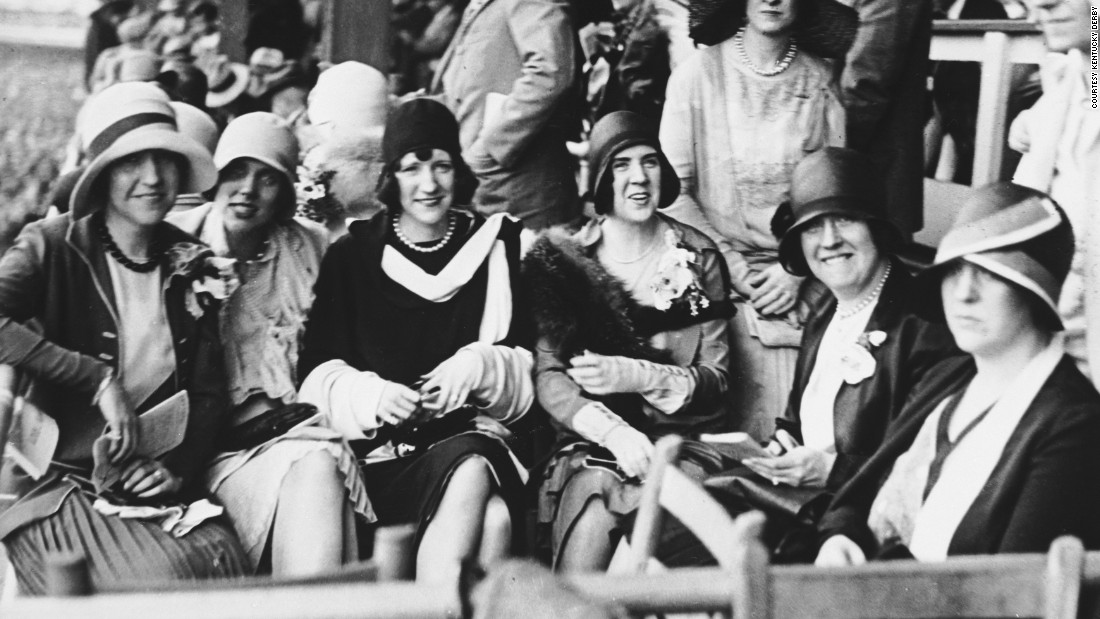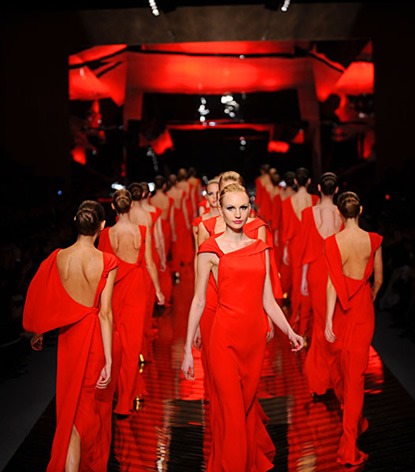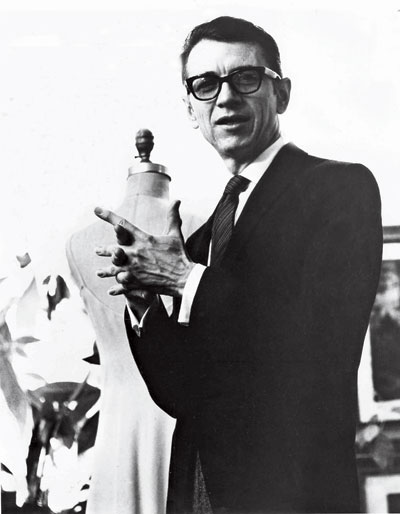talkingfashion » consignment shop in columbus
-
Fashion Flashback: The Hot History of Hats
Fashion Flashback: The Hot History of Hats
By Paige McKirahan
To continue on with our historical evaluation behind some of the most iconic accessories of all time, it would only be appropriate to reflect on how hats came to be in celebration of Hat Day! Whether they be worn for fashion, protection, ceremonies, rituals, or utilitarian purposes, these head coverings have been a staple in the industry for thousands of years. Of course, this long history starts in ancient Egypt; one of the first images depicting a hat can be found in Thebes tomb and this illustration shows a man wearing a conical straw hat. They also first appeared in an early illustration of Pileus which depicted him wearing a simple small cap.

Ancient Egyptian Headwear (source)
In this time and throughout history, one of the most popular materials for hats is felt. The ancient Egyptians and Native Americans first discovered this material when they discovered that camel hair, when compacted into the floors of their sandals, contributes to the creation of this material. St. Clement, the patron saint of felt hat makers, was said to encounter the material in a similar fashion after filling his shoes with flax fibers.
In these ancient times, hats were generally worn either to signify high status or for protection from the elements. In Ancient Rome and Greece, Phrygian caps also referred to as Liberty caps, were used as symbols of freedom for exonerated slaves. The first brimmed caps were found in Ancient Greece and were worn by those seeking to protect themselves from the sun, typically those working in fields or in construction.
As headwear began to evolve, gendered styles came into play during the Middle Ages; women were wearing a variety of new head covering designs ranging from veils to wimples. Later in those years, women’s hats transformed into elaborate displays of wealth that sometimes featured two horn-like decorations or conical shapes.

Middle Ages Hat Styles (source)
The 18th century birthed newer designs created by milliners; the term was created to describe products made in Milan and other Northern Italian regions that were made with high-quality materials. One of the most popular hats of this time was the Shepherdess hat, which featured a large, sun-blocking brim. Bonnets were as popular women’s in fashion as top hats were for men, and both were made from silk at the time. Silk top hats were so popular and awe-inspiring that a man wearing once caused such a stir in the streets he earned himself a 500 dollar fine from inciting panic!
In the following century, hat’s widespread popularity began to rise and was considered to be very fashionable as more designs become available. Women’s hats started growing in size and opulence with many including feather details, circular constructions, and varying brim styles. Brim sizes saw a decrease with the introduction of the parasol umbrella, and then grew again as the 20th century grew closer. Hats also began adapting to popular hairstyles, accommodating new cuts and fashions as to not disturb one's overall look. The first Kentucky Derby occurred in this century and established itself as the largest hat fashion event in America (and it still is to this day!).

The 20th century saw hats in a new light entirely. Wars, constant rationing, and accompanying social and cultural changes had a huge impact on all aspects of fashion, including headwear. The cloche hat peaked in popularity, and round hats with decorative flowers were another favorite of fashion lovers everywhere. Towards the middle of the century, fashion icons like Jackie Kennedy popularized the pillbox hat, which was followed by the fedora for both genders. Berets, top hats, sombreros, western hats, and ball caps all fluctuated in popularity during this time, and some of these styles are still very well received by the public.
Today, hats are still a hugely popular accessory and have been made staples in many sporting, cultural, and social events. They aren’t typically worn for ornamental purposes with as much gusto as they once were, but sports caps, beanies, and sun hats are beloved accessories for casual wear in modern times. To get a piece of fashion history to have as your own, check our collection of hats
Happy Hat Day TalkingFashion Peeps!
Sources:
A Brief History of Hats. (2011). Retrieved from http://hatbox.com/hat-history.cfmHistory and Origin of Hats. (n.d.). Retrieved from http://www.historyofhats.net/hat-history/who-invented-hats/ -
The Benefits of Consigning your Jewelry and Vintage Accessories with TalkingFashion
The Benefits of Consigning Your Jewelry and Vintage Accessories
By Paige McKirahan
Looking to get rid of any pieces collecting dust in your closet? Look no further! Here at TalkingFashion, we are always looking for fun, fresh inventory to join our collection. We accept high quality women’s and men’s vintage or antique jewelry, as well as bijoux accessories. If you don’t see the designer of your piece on our A-Z Designers List, not to worry; if you have an unmarked or unknown piece that is unique or valuable, we would be happy to take a look at it! Wondering how you can consign? You can take your pick of our three easy methods below:
- Schedule a free in-home pick up with a team member. (Columbus, Ohio residents only!)
- Ship your items to our office directly
- Come into our office for a free valuation and drop-off.
Once we receive your piece, one of team members will carefully evaluate your item to ensure it is properly identified, authenticated, photographed, and priced. We will then market and ship your piece once it is sold, and you can be paid by online cash transfer, direct deposit, or site credit (which earns you an extra 20%!). Our commission rates vary by item price, and you can view our commission structure here.
Consigning in general has great benefits as it is a sustainable practice that extends the life of pieces, putting their beauty back on the map. When you consign with us, the list of benefits only seems to grow; our high commission rates makes us the obvious choice for all your vintage and bijoux consignment needs! Have more questions? Email use at consign@talkingfashion.net and we would be happy to help!
-
She Sells Cowrie Seashells by the Sea Shore
She Sells Cowrie Seashells by the Sea Shore
written by Morgan Watkins
In the cold winter months ahead, it’s safe to say that we could all use a little bit of warmth and sunshine in our fashion lives. But how do you incorporate the spirit of the sea into an everyday look? Accessorize with cowrie seashells! Along with being sleek and chic, these natural, nautical pieces carry with them great symbolism and history. Keep on reading to get the low down on cowrie shell accessories.Most commonly found on continents and islands of the Indian Ocean, cowrie shells were utilized by many as currency. Holding monetary value in ancient Asia, Africa, Oceania and even North America, these shells could be used to acquire necessities and goods such as clothing and food. During the height of the West African slave trade, slave owners could buy slaves with this currency.

Juxtaposing the sinister trade going on in Africa during the 17th century and beyond is the beautiful meaning within the cowrie shell. African cultures associated these smooth shells with the Goddess of protection, as well as the strength of the ocean. In fact, it is believed that those who are attracted to the cowrie shell are actually descendents of ocean spirits. These shells also symbolized destiny and prosperity, as they were worn on the hips of both African women and the women of Ancient Egypt to increase female fertility. These girdles could be worn during labor as well as a way to promote a safe delivery. Even when analyzing the shape of the cowrie shell, one could make the distinct connection of the shell’s shape to the shape of a pregnant woman’s belly.
Along with encouraging prosperous fertility among women, these shells could be utilized to provide protection for women and children from evil spirits. The dead even adore the cowrie shell, as they have been found worn by corpses in Ancient Egyptian and African tombs in the form of simple bracelets and necklaces. It is said that they can continue to protect the dead as their spirits leave the physical world.

(Image from https://everythingsoulful.com/symbolism-the-cowrie-shell/)
On a less spiritual note, cowrie shells could be used in a myriad of other ways, like to add a hint of beachy flair to an outfit. To increase their value in jewelry pieces, silver and gold can be added inside and around the shell for a pop of shimmer and shine. When paired with bohemian styles like fringe boots, woven anklets and nautical neckwear, these shells embody the free spirited nature of the ocean.

Whether wearing these shells as a means of protection or fertility, or simply to add easy breezy beach vibes to your look, wearing cowrie shells are an effortless way to reconnect with the ocean no matter how far off the coast you may be. Want to shop some of our best bohemian pieces? Head over to talkingfashion.net to peruse our stylish shell accessories!
References:
“Cowry Shell Necklace.” The Smithsonian: The National Museum of American History, http://americanhistory.si.edu/collections/search/object/nmah_1066631.
Prieto, Anayeli. “Cowrie Shells In Ancient Egypt: From Money To Motherhood.” StMU History Media, 28 Mar. 2017, https://www.stmuhistorymedia.org/crowie-shells-from-money-to-motherhood/.
“SYMBOLISM: THE COWRIE SHELL.” Everything Soulful , 22 Mar. 2016, https://everythingsoulful.com/symbolism-the-cowrie-shell/.
-
History of Valentino
History of Valentino
By Paige McKirahan
There are few words that you think of when you hear Valentino, and most of them are associated with luxury. This haute couture label is one of the top fashion brands in the world and has been seen on industry magazines, runways, and red carpets around the globe. Everyone from the likes of Elizabeth Taylor to Naomi Campbell have been seen in these designs and with such a high profile presence in not only the fashion industry, but in the luxury industry as well, you would expect a history that lives up to fame. Valentino Garavani, the creator of the fashion house, made sure that in not only lived up to those expectations, but exceeded them.

(photo credits to wwd.com)
Garavani, an Italian native, was born in Voghera in 1932. He had an affinity for fashion starting at the beginning of his life, and eventually went on to study design in Paris at the beginning of 1950. He then was hired for his first design position with Jean Desses, and worked for them until 1967 when he obtained a position with Guy Laroche in his new atelier. After working there for two years and improving his taste and his technical skills, he returned to Italy and opened his own fashion house. At the end of 1957, he debuted his first haute couture collection and his refined lines and sophisticated aesthetic garnered great praise from publications like the Sunday Times in London.

Valentino with his collection for Guy Laroche in 1967
(photo credits to her.ie)
In the following three years, he quickly became the favorite of those in the “new Hollywood”, or Cincecitta, during great economic success in Italy. One of the first big names to wear a Valentino design was Elizabeth Taylor during her time filming Cleopatra in Rome. His collection for fall/ winter in 1961 boasted garments inspired by Jacqueline Kennedy, which only increased his growing global fame. His superstar status was secured after his 1962 show in Florence; the designs were so dazzling that he became the first Italian designer to have a French Vogue cover created in their honor.

Valentino 1961
(photo credits to pinterest.com)
His fall/ winter collection for 1963, which featured wild animal motifs, landed him in the pages of American Vogue, launching his popularity in the American market. The 1966 Valentino collection has become famous for its pop-art inspired pieces, which were aligned with the iconic movement during that decade. The 1960s proved to be quite prosperous for the brand as the designer’s pieces and accessories, especially his handbags sporting the luxurious gold “V”, were considered to be fundamental parts of a jet setting woman’s wardrobe. 1968 saw critical moments for the label; its spring/ summer line that year contributed to the dissipation of a haute couture crisis that involved people looking at less exclusive models. Following the show, shops opened up in Paris and Milan and later that year Valentino designed Jacqueline Kennedy’s wedding dress. These events made Garavani the most acclaimed designer in the industry at that and set the tone for the rest of his time with the brand.

(photo credits to pinterest.com)
The 1970s brought experimental changes; a boutique line was created alongside of the Valentino label itself, and both lines adopted an art deco aesthetic. The brand’s first namesake perfume was released in 1978, and it was followed by a line of blue jeans that made their debut at none other than Studio 54. Moving into the ‘80s, we see the rise of the famous Valentino red accompanied by classic black and whites; the silhouettes included a variety of draping, ruching, and dramatic details. The ‘90s saw a decade of celebrations for the brand’s 30 years in fashion through a series of films, books and exhibitions. Valentino himself sold the brand to Holding di Partecipazioni Industriali SpA (HdP) in 1998, but remained the creative director until his retirement in 2008; his last show was at the Musee Rodin in Paris and featured the most iconic set of supermodels from all of his decades in fashion. After Garavani’s retirement, Ferruccio Pozzoni and Alessandra Facchinetti took over his position and they were then succeeded by Maria Grazia Chiuri and Pierpaolo Piccioli shortly after, who still director the label today.

From Valentino's last show as creative director, 2008
(photo credits to loveofvalentino.blogspot.com)
Valentino has seen a wide collection of iconic accessories ranging from heels to bags. As I said before, the iconic “V” bag was a staple in womens closet and established the house as an essential brand. The Valentino Rockstud heel is quite possibly the most iconic piece to come out of the brand; these studded, strappy stilettos have been a favorite of street style aficionados and have inspired an entire line from the brand. This newfound studded fame reignited the brands popularity and has brought Valentino back to the forefront and into the closets of millions. Check out our favorite Valentino piece in our collection and gift yourself some classic red couture this holiday season!
-
The Master of Bias: Charles Kleibacker
The Master of Bias: Charles Kleibacker
By Paige McKirahan
Though there have been many iconic designers in the past century that have made a substantial mark on the fashion world, Charles Kleibacker may be the most enigmatic. Born in 1921 in Alabama, this American creator earned his nickname “Master of Bias” because of his affinity for complex gown designs involving cuts diagonal to the weave. Despite his iconic status in the fashion world, Kleibacker wasn’t always so well versed in the industry; he attended the University of Notre Dame and majored in journalism, which lead him to attend New York University for his graduate studies.

Kleibacker in 1565
(photo credits to threadmagazine.com)
He eventually relocated to California and met singer Hildegarde in San Francisco after running into one other in the same hotel. His large station wagon landed him a job as her driver and he toted around her and her entourage on tour all around the globe. It was in Europe when he finally realized his love for fashion after meeting a multitude of fashion designers through Hildegarde. His interest was piqued while in the offices of Christian Dior, and this prompted him to submit a set of early designs that earned him a spot at Lanvin in 1954. He worked there for three years and promptly returned to New York to work for Nettie Rosenstein, on the most highly regarded American fashion designers of her time.

Kleibacker for Lanvin, 1967
(photo credits to pinterest.com)
In 1959, he moved out of the shadow of others and into his own light when he began designing his own collection out of his brownstone in the Upper West Side. The line was a huge success and by the mid ‘60s, he was creating pieces for some of the most exclusive luxury clothiers including Henri Bendel and Bergdof Goodman. His trademarks were silk and wool crepe and of course, the bias cut; this special practice created designs that had a true cut look, not one that appeared stamped out.

Kleibacker designs
(photo credits to garmentozine.wordpress.com)
After his great success in New York, Kleibacker came to Ohio and became a Designer- in- Residence at The Ohio State University’s Costume and Textiles Collection. His work was a part of a 2005 exhibit there in the College of Human Ecology. He then became an adjunct curator of design at the Columbus Museum of Art and organized multiple fashion related exhibits. He remained there until the time of his death in 2010, when he passed away due pneumonia at 88 years old. Our very own CEO had the pleasure of working closely with him on multiple local fashion shows and events, making him also a close companion of our brand here at TalkingFashion. As an amazing designer so close to our home office, we felt it would only be appropriate to celebrate his wonderful life; one with a nickname like “Master of Bias” is hard to forget.
Sources:
Charles Kleibacker. (2018, October 06). Retrieved from https://en.wikipedia.org/wiki/Charles_Kleibacker







